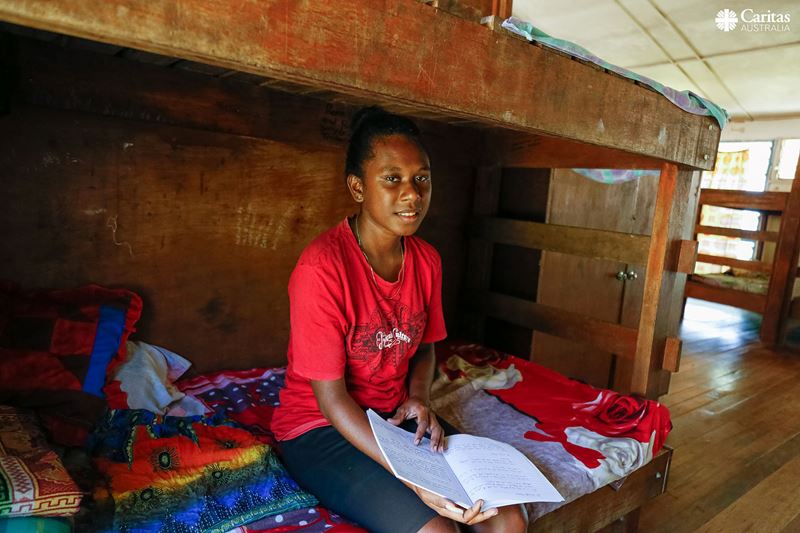Empowering Change: Your Generosity Transforms the Daily Lives of Women
01 Sep 23
It is true that global wealth is growing in absolute terms, but inequalities have also grown, and new poverty arisen.
What does poverty actually look like in real terms? Poverty is more complex than not having enough money, it occurs for many reasons: conflict, the environment, social inequity, education levels, and health access are just some of the contributing factors. The result can be a lack of access to adequate food, clean water, shelter, education, healthcare and other essential services.
With your help we can tackle the root causes of gender inequality, such as unequal access to education, health and economic opportunities, and forge a path towards a more just and equitable world. Time and time again we see that empowering women can create a ripple effect that uplifts entire communities.
Behind every statistic is a real person - a woman with dreams, aspirations, and a will to overcome adversity. One example of this is Anatercia, from Mozambique, who we visited two years ago.

Poverty in Daily Life: Anatercia’s Story
Anatercia not only shoulders the responsibility of caring for her mother, who has chronic health issues, but also supports her grandfather, who is blind, and grandmother, who has lost mobility. Her father passed away when she was just four years old. Thus, she was forced to take on added household tasks and farm work.
I help my family with cooking, cleaning, and collecting water.
Each day, Anatercia would wake up early and walk 10km to school. In the early afternoon she began chores such as collecting water, working on crops, processing grain, collecting firewood, and later often helped cook dinner.
The burden of domestic responsibilities compounded by heavy caring responsibilities, can become barriers on the path out of the cycle of poverty. Women face unequal rates of care work compared to men. In lower income countries, where public welfare and infrastructure are underdeveloped or developing, this impact is exacerbated to an even greater extent in rural areas. According to the “Time to Care” report conducted by in 2020, women in low income countries and rural areas spend up to five times more unpaid hours than men providing care.
Thanks to the generosity of someone like you, Anatercia was supported with access to school equipment and clothes, irrigation systems for her farm, local taps to reduce hours of labour collecting water, and was provided with the opportunity to attend a much closer school. You can watch Anatercia’s story here.
Nepal: Laxmi
Similarly burdened by multiple daily responsibilities, Laxmi from Nepal was at risk of falling into extreme poverty. Caritas Australia visited her two years ago.
When her father passed away when she was just ten years old, Laxmi’s school attendance ceased. A child’s club supported by Caritas Australia allowed Laxmi to get back on her feet and work hard to finish her schooling.
At the age of 16, Laxmi would wake up at roughly 6am every morning, starting her day by feeding goats before attending technical school during the day.
Laxmi’s determination and resilience was evident as she attended and ran many child’s club activities during her afternoons. At 5pm Laxmi worked on crops to support her family. In the evenings, she helped her mother prepare dinner.

Solomon Islands: Shaniella
Crossing over to the Solomon Islands, Shaniella faced similar difficulties in completing education. Moving to a Rural Training Centre, she had to travel three days by boat to access her education. The rural centre, supported by Caritas Australia, teaches students from low socio-economic backgrounds like Shaniella vocational skills.
She started her day around 6am, collecting water before attending school during the day. Climate change is worsening extreme weather events in Pacific Island nations such as the Solomon Islands and will make the daily lives of young women like Shaniella increasingly uncertain. As a result, in the afternoon she completes disaster risk reduction training, so she and her community are better prepared for the reality of this in coming years. You can watch Shaniella’s story here.
Climate change will disproportionately affect women and girls as they bear unequal access to protective factors against poverty (UN Women, 2022).
Priscilla from Zimbabwe
Also affected by climate change, Priscilla from Zimbabwe has witnessed her crops fail in recent years, as a result of a prolonged drought.
We had plenty of rains at first but as time has gone by, the rains have become erratic and hence the yields have been reduced.
Thanks to the generous donations of supporters like yourself, Priscilla was provided with conservation farming skills to grow drought-resistant crops and started poultry farming to diversify her food production.
Priscilla now spends her mornings bathing and feeding her two young grandchildren before seeing them off to school. In the morning she does a variety of chores and collects water for the house. She has to manually wash her clothes as there is no power on the property. In the afternoon, she works in her community garden and tends to her chickens and cattle. In the evenings she prepares dinner and cleans up after her family, and looks after her two grandchildren.
It is evident from taking a closer look at the daily lives of people facing poverty, that while they each have their own unique experiences some common themes emerge: time travelling to cover basic needs, time taken in completing labour without access to technology or power, and time taken in increased roles and responsibilities caused by a variety of factors.
By taking steps to address the systemic barriers that perpetuate women's poverty, Caritas Australia works across the world to create a brighter future for generations of women.
By addressing the challenges identified by local communities themselves and by placing a focus on the inequities that inevitably emerge from the factors within those communities, we are able to support robust, lasting transformations in the daily lives of those we serve.